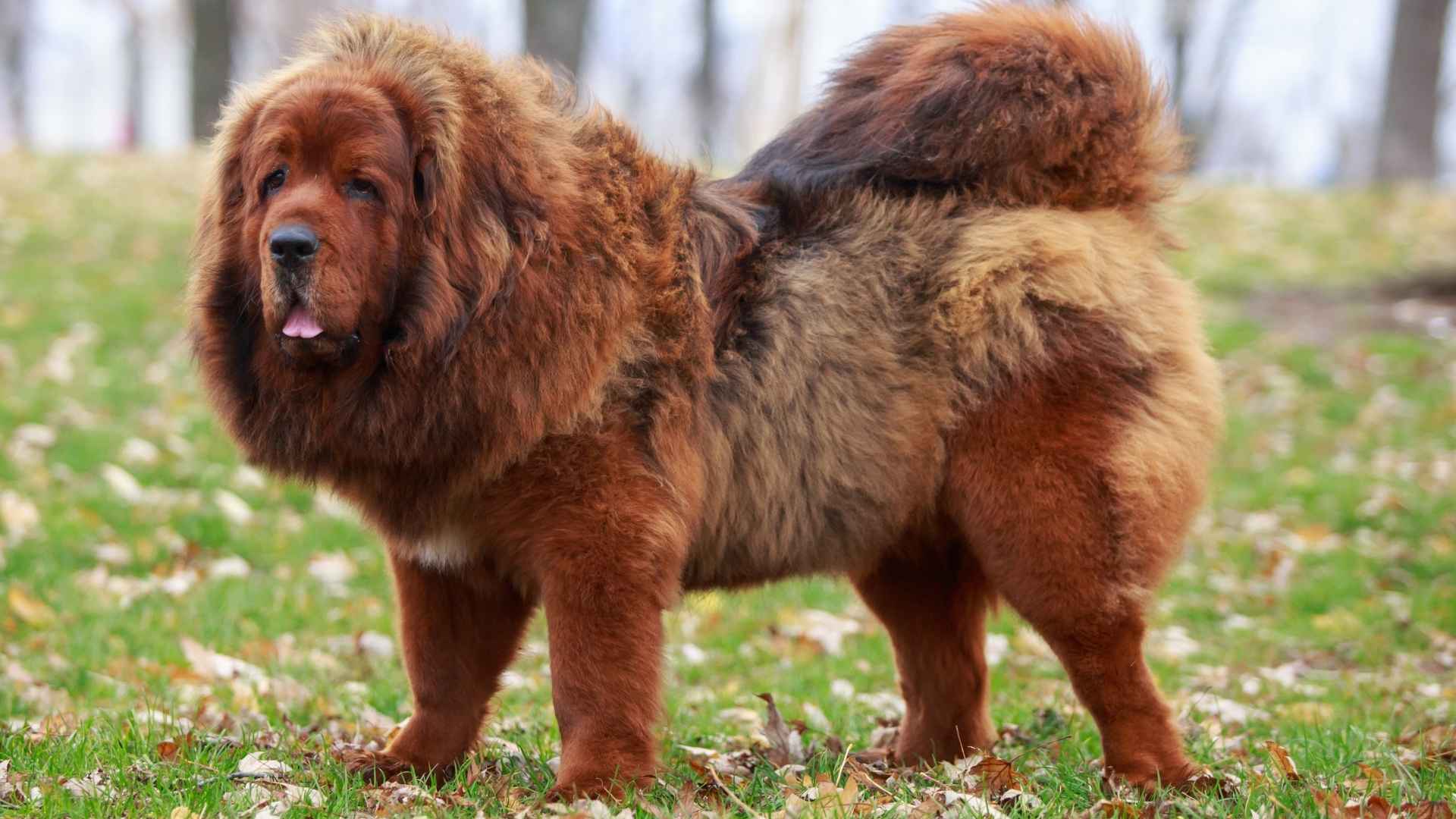Some dog lovers believe that when it comes to canine companions, bigger truly is better. Big dog breeds may look imposing at first glance, but they’re often gentle souls who thrive in relaxed home environments. Their calm demeanor, affectionate nature, and loyal hearts make them beloved additions to families who can accommodate their size and needs.
While a large dog can fill your home with love (and fur), bringing one into your life isn’t a decision to make lightly. These giants grow rapidly, often reaching their full size by two years old, with most of that growth happening in the first year. Their sheer size means you’ll need ample space, not just for their bodies but for their energy during puppyhood. Even the most mild-mannered big dog can unintentionally knock over a child or crowd a small living room.
Before committing to a colossal canine, it’s important for prospective pet parents to understand what life with a large dog entails. From room to romp to the right care routines, big dogs come with big responsibilities—and even bigger rewards.
Big Dog Breeds
1. Saint Bernard
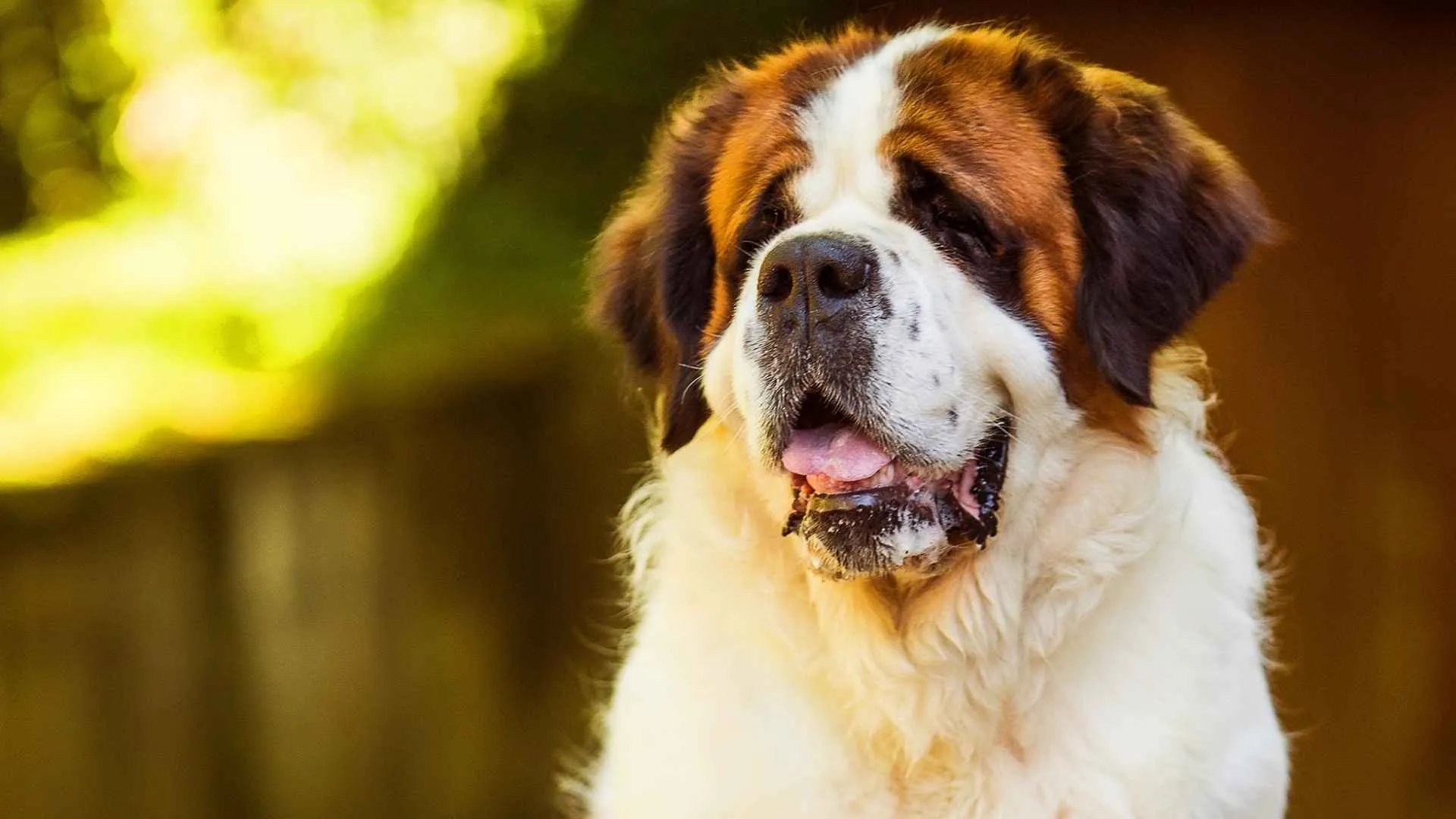
The Saint Bernard is the epitome of a gentle giant—massive in build yet incredibly affectionate and calm in nature. PDSA states that Saint Bernards are famously gentle giants and are a good fit for many families, provided there’s enough room to accommodate their large size.
Originating from the Swiss Alps in the 17th century, these dogs were developed by monks at the Saint Bernard hospice to locate travelers lost in snow-covered mountain passes. Descended from mastiff-like dogs introduced by the Romans, this breed quickly earned its place in history as a life-saving rescue dog.
Typically weighing between 120 and 180 pounds and standing 26 to 30 inches tall, Saint Bernards are imposing yet friendly, known for their devotion and tolerance, especially around children.
Care Needs
These friendly dogs require dedicated grooming due to their thick double coat, which sheds heavily, especially during seasonal changes. Weekly brushing is essential to prevent matting and manage loose fur. They’re prone to drooling, so facial hygiene is important.
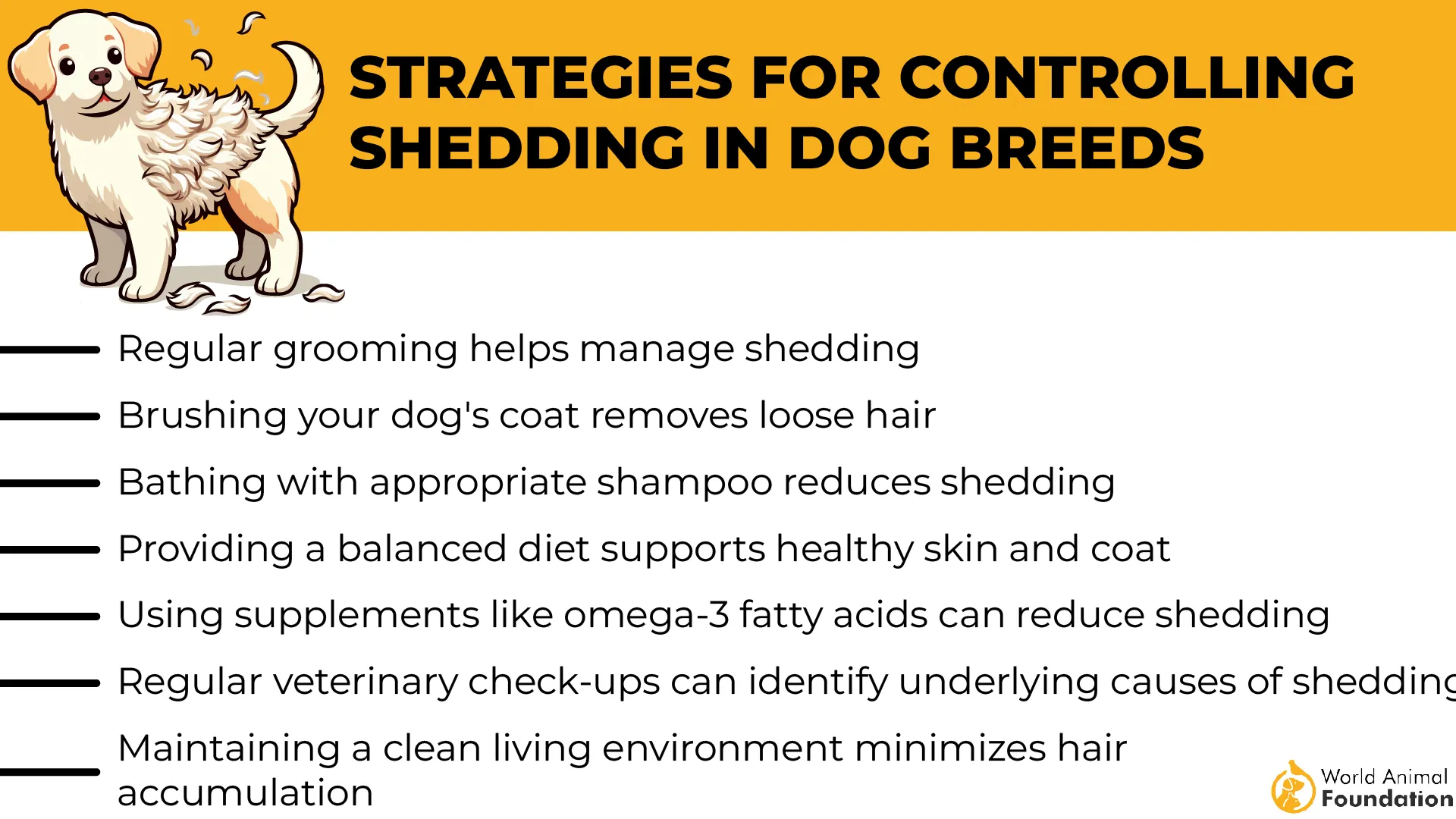
These dogs need moderate daily exercise to maintain joint health without overexerting their large frames. Because of their size, early obedience training is crucial to prevent pulling and ensure manageable behavior as they mature.
Fun Fact: The most famous rescue dog of this breed, Barry, is credited with saving around 40 lives in the early 1800s.
2. Leonberger
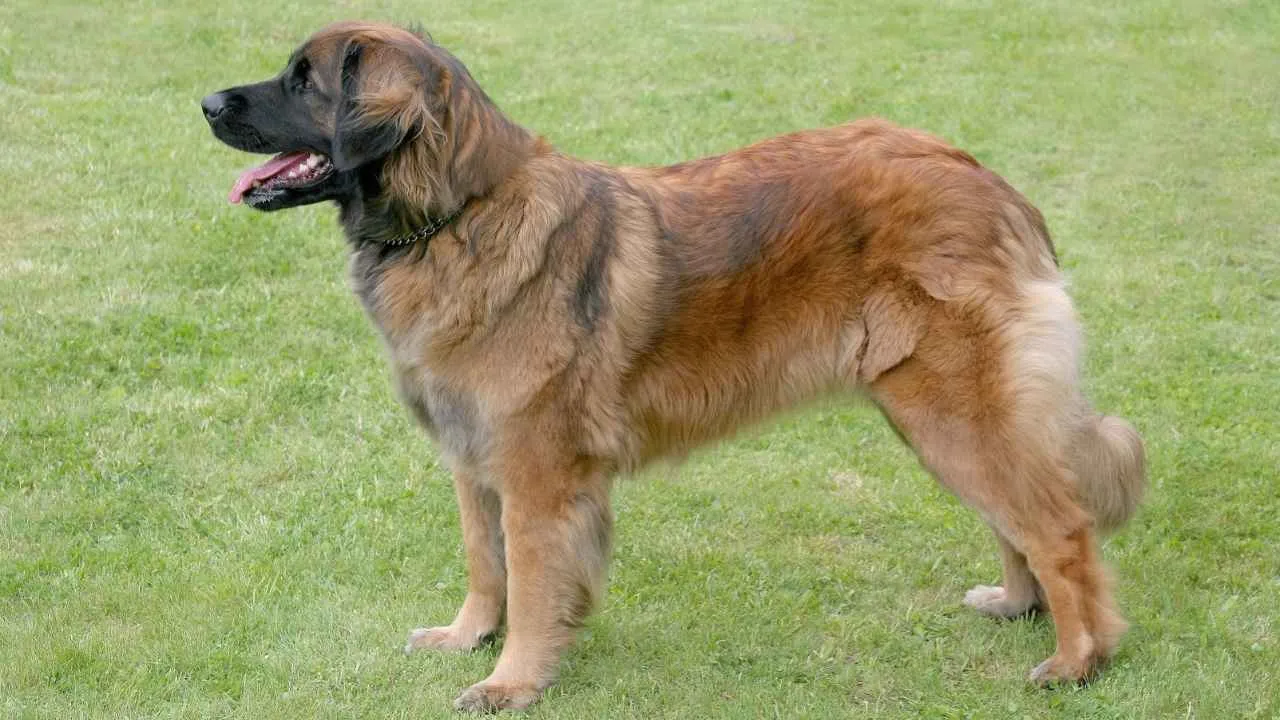
The Leonberger is a strikingly noble breed with a gentle heart and a giant’s strength. Bred in 19th-century Germany to resemble a lion, this working-class canine combines grandeur with affection. Males can reach heights of 31.5 inches and weigh up to 170 pounds, while females are slightly smaller but equally majestic.
According to the AKC, the Leonberger is sociable, fun-loving, and mild-mannered. Their double coats—thick, water-resistant, and often golden or reddish with a signature black mask—add to their regal appearance. Leos are known for their loyalty, courage, and calm demeanor, making them devoted family dogs.
Care Needs
Maintaining a Leonberger’s plush coat requires dedication. Brush them at least twice a week to prevent matting and remove loose fur, especially during seasonal shedding. Their size and ear shape make them prone to ear infections, so regular ear cleaning is a must.
Their thick fur tends to trap debris, so bathing when necessary and checking paws for dirt is advised. Additionally, routine dental care and nail trimming are essential to their overall well-being.
Fun Fact: Leonbergers aren’t bothered by wet weather—their dense, water-resistant coats make them ready for adventure rain or shine! .
3. Irish Wolfhound
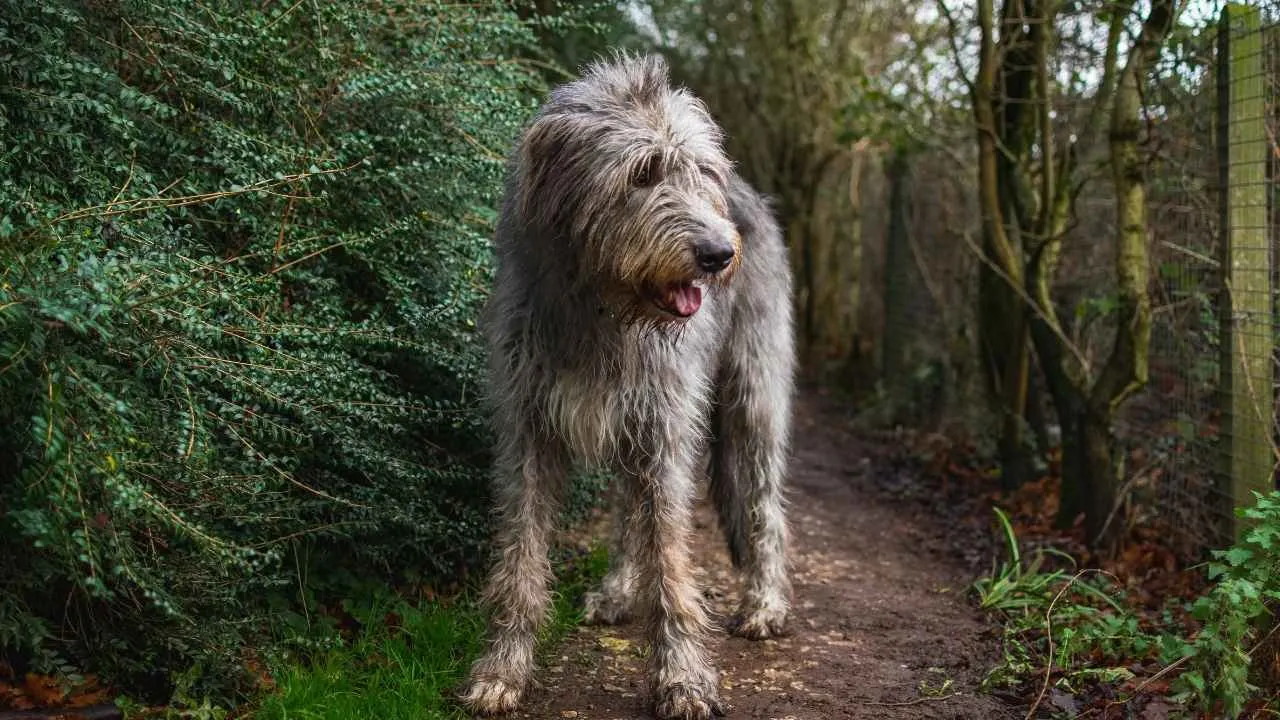
Towering above nearly every other dog, the Irish Wolfhound is the tallest dog in the AKC registry, with males reaching at least 32 inches tall and weighing up to 180 pounds. Females are slightly smaller but still impressively large.
WebMD describes Irish Wolfhounds as affectionate, composed, and devoted companions. With origins in ancient Ireland, this breed was developed to hunt wolves and protect homesteads, nearly becoming extinct once wolves vanished.
Thanks to the efforts of Captain Graham in the 19th century, this large dog breed was revived and celebrated for its noble temperament. The Irish Wolfhound’s wiry, medium-length coat can be seen in a variety of shades, including gray, black, white, red, and brindle.
Care Needs
Irish Wolfhounds require regular health monitoring due to their size and genetic predispositions. Common concerns include heart conditions like cardiomyopathy, hip and elbow dysplasia, and osteosarcoma. Annual heart screenings and joint evaluations are essential.
Puppies must be managed carefully during growth to prevent skeletal issues such as osteochondritis dissecans. Nutrition, moderate exercise, and early testing for liver shunt are also vital. These giants are prone to bloat, so mealtime routines should be structured and monitored.
Fun Fact: Irish Wolfhounds were once so revered that owning one was reserved for royalty and nobility in ancient Ireland.
4. Tibetan Mastiff
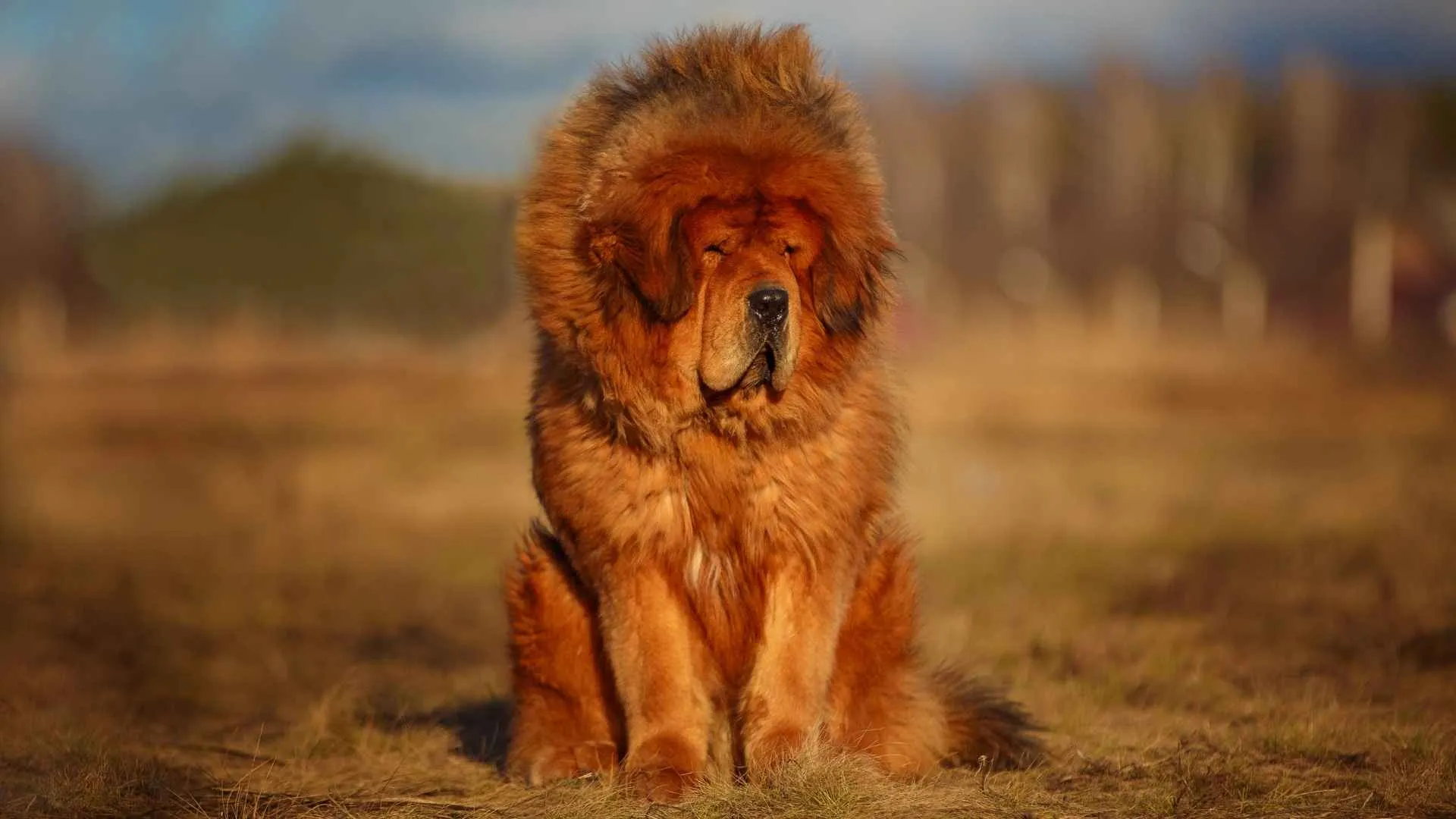
The Tibetan Mastiff is an ancient guardian breed, renowned for its commanding presence and noble demeanor. Originating from the Himalayan region of Tibet, these dogs were bred to protect monasteries and livestock from predators.
Towering at a minimum of 24 to 26 inches and weighing between 70 to 150 pounds, they embody strength and independence. Their thick double coat—ranging in shades like black, brown, gold, or gray—not only gives them a lion-like mane but also enables them to endure extreme weather.
Care Needs
These loyal dogs require attentive grooming to manage their dense coat. When shedding, daily brushing is essential to prevent mats and tangles, while non-shedding periods call for grooming twice a week.
Bathing should occur frequently—ideally every week, but never beyond six weeks—to maintain coat and skin health. Regular coat care also supports temperature regulation and prevents skin issues.
Fun Fact: Known as “lion dogs,” Tibetan Mastiffs have been owned by celebrities like Vin Diesel and Dwayne Johnson, drawn to their regal looks and loyal nature.
5. Great Pyrenees
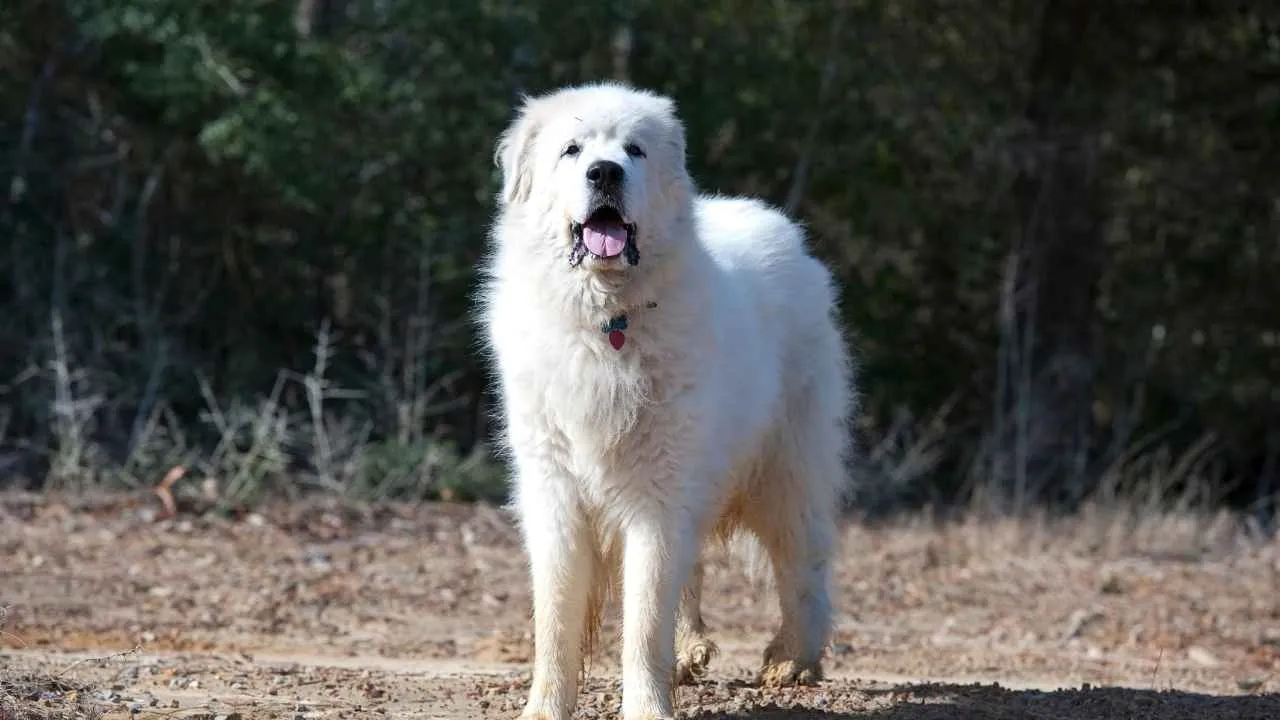
With roots dating back thousands of years, the Great Pyrenees is a majestic breed developed in the Pyrenees Mountains between France and Spain. Originally used to guard flocks from wolves and bears, their strength, endurance, and courage are legendary.
Males can weigh over 100 pounds and stand up to 32 inches tall, while females typically reach 85 pounds. Their dense, weather-resistant white coat once served as camouflage against the snow.
Calm yet independent, these gentle giants are devoted family protectors, especially fond of children. Due to their heritage, they are naturally alert and prone to roam, so secure fencing is a must.
Care Needs
This large breed requires a dedicated care routine. Their thick double coat needs weekly brushing to prevent matting and control shedding. Regular checks for skin issues, such as hot spots, are important due to their dense fur.
Health-wise, they’re predisposed to certain genetic conditions, including hip dysplasia and bloat. Routine veterinary visits and a breed-specific health plan can help detect issues early and manage them proactively.
Fun Fact: Evidence suggests the Great Pyrenees arrived in their namesake mountains as far back as 3000 BC.
6. Great Dane
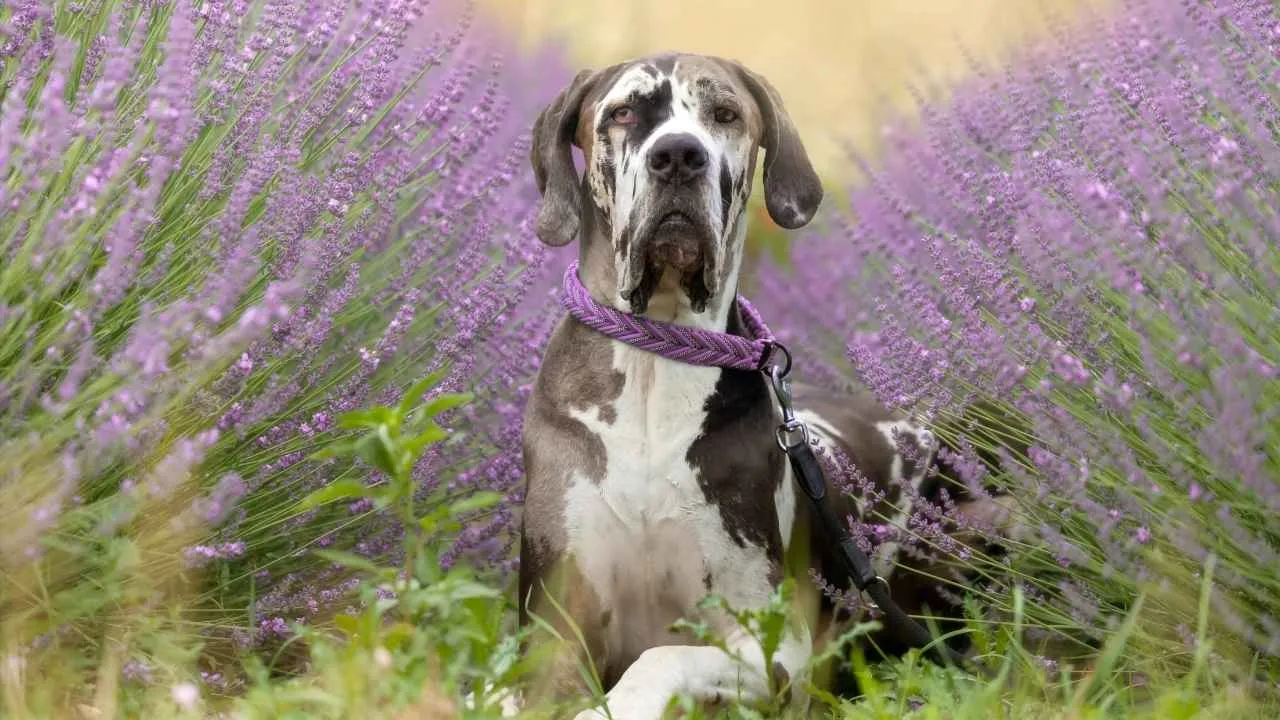
The Great Dane is a towering symbol of elegance and strength, originally bred in Germany over 400 years ago. Despite its name, this breed has no historical ties to Denmark. Instead, it descended from powerful hunting dogs used to track wild boar and protect estates.
With males standing between 30 to 34 inches tall and weighing up to 200 pounds, these giants are the tallest in the working group. They sport a short, sleek coat that comes in various colors, including fawn, harlequin, merle, and brindle.
Care Needs
Although massive in size, Great Danes are relatively low-energy and thrive with moderate exercise. Due to their slow maturation, over-exercising young Danes can harm their joints.
They need daily walks, soft bedding to support their large frames, and regular vet checkups to monitor for common breed-specific health concerns like bloat and joint issues. Despite their calm demeanor, they require early socialization and basic obedience training due to their size and strength.
Fun Fact: The Great Dane’s nickname—“Apollo of Dogs”—pays homage to its noble appearance and towering stature, symbolizing grace and power.
7. Newfoundland
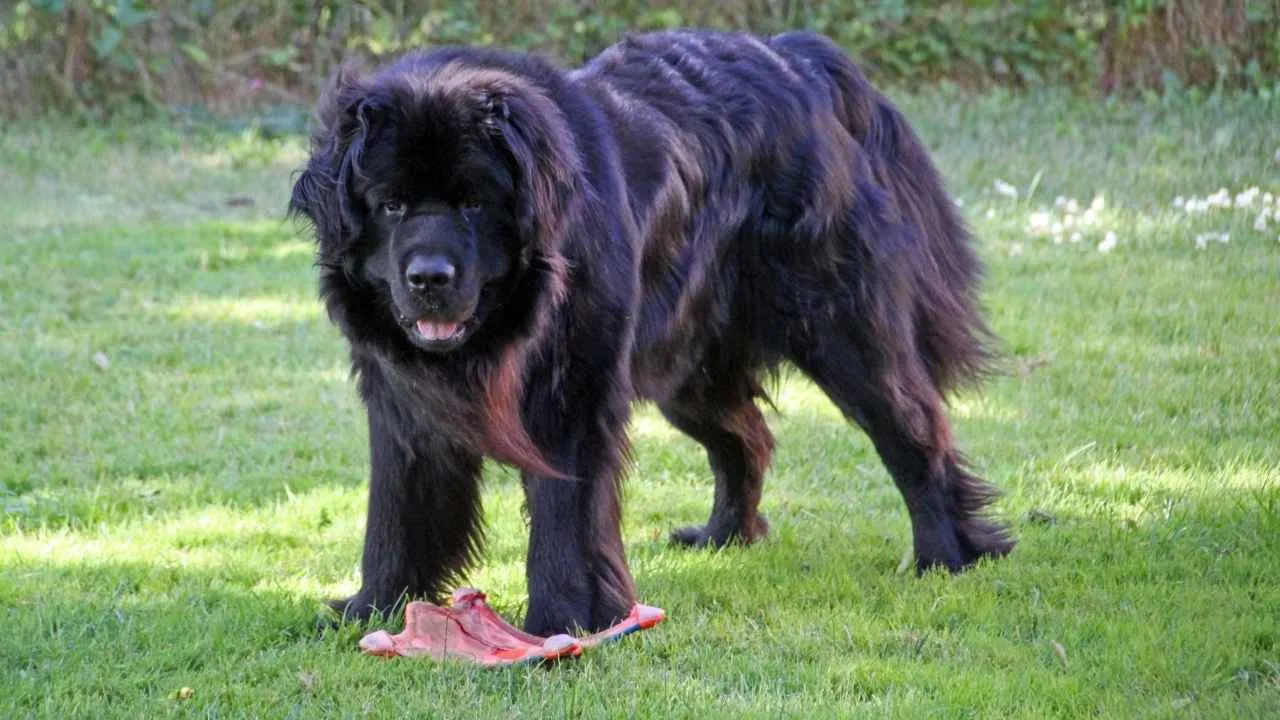
The Newfoundland is a large, strong working dog originally bred in Newfoundland, Canada, where it assisted fishermen and became renowned for water rescues. These dogs can stand between 26 to 28 inches tall and weigh anywhere from 100 to 150 pounds.
They are instantly recognizable by their thick double coat, large head, and webbed feet—traits that enhance their swimming abilities and tolerance for cold water. Often described as affectionate and patient, Newfoundlands have a calm temperament and an instinctive gentleness that makes them exceptional companions, especially for families.
Care Needs
Due to its dense coats, this large dog breed requires regular grooming to prevent matting and manage shedding. Weekly brushing is essential, along with extra care during seasonal shedding periods. Their size and structure also make them prone to joint issues, so moderate exercise and weight management are key.
They thrive in cooler climates and need ample space to move comfortably. Owners should also prepare for consistent drooling and maintain hygiene around the mouth and neck area.
Fun Fact: Newfoundlands have been observed to instinctively recognize signs of drowning and perform water rescues without formal training.
Conclusion
Big dog breeds may appear intimidating at first glance, but behind their grand stature often lies a gentle and loyal heart. From water rescue specialists like the Newfoundland to dependable mountain dogs with centuries of service behind them, these breeds offer unmatched devotion and utility. Their size often comes with a calm demeanor, making them excellent family companions for those with ample space and a love for active lifestyles.
While breeds like the Afghan Hound bring elegance and independence to the world of large dogs, others, such as livestock guardian breeds, continue to play vital roles in rural and working environments. Understanding each breed’s history, care needs, and life expectancy is essential in choosing the right fit for your home. Whether you’re seeking a dog with heroic instincts or a majestic presence, big dogs embody strength, intelligence, and heart in equal measure, earning their title as gentle giants in every sense.


